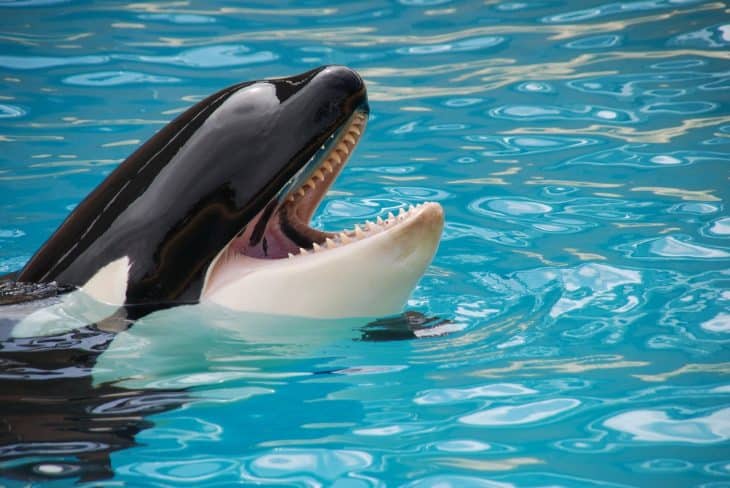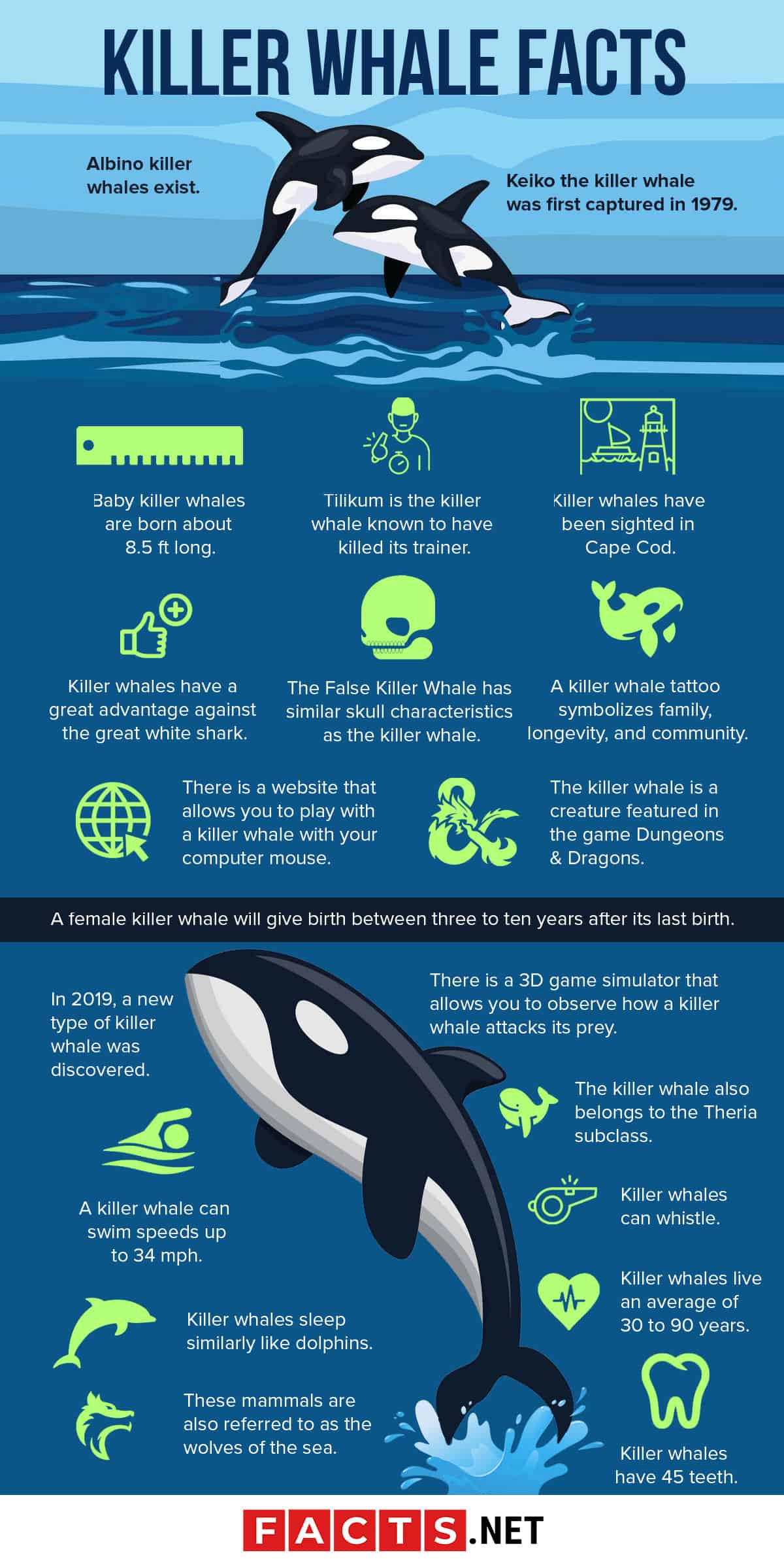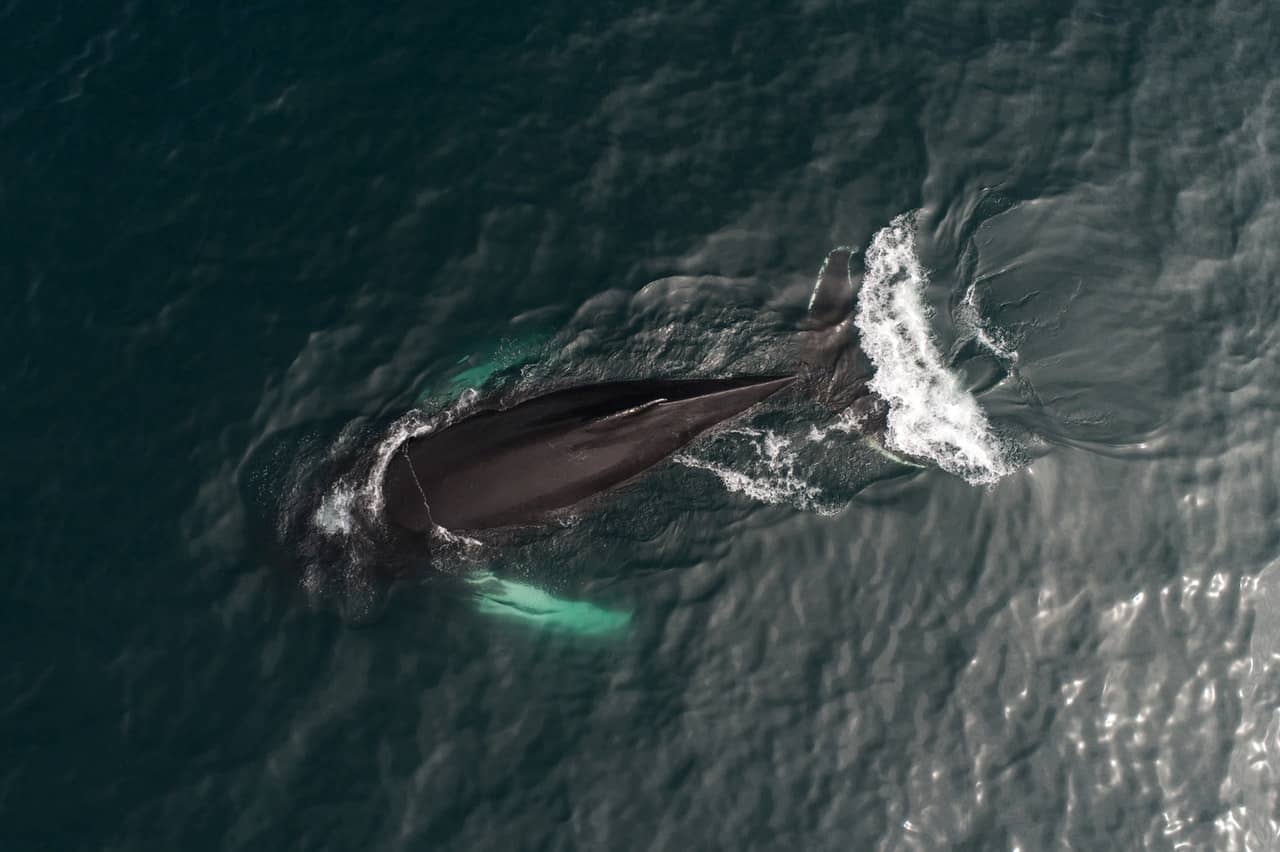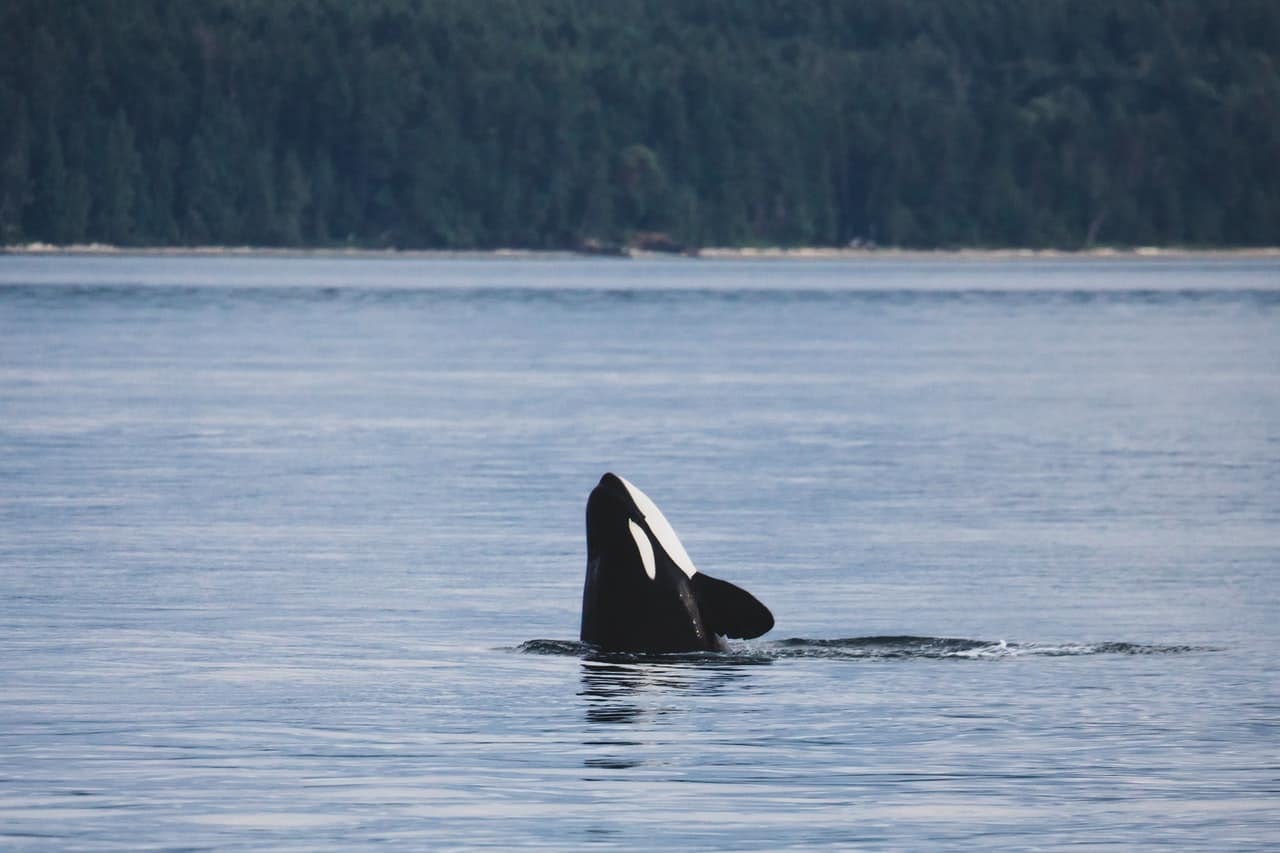
Killer whales are one of the largest mammals to inhabit our planet. They are also one of the fastest swimmers found in the ocean. While these creatures may look beautiful, they can be quite vicious. Take a look at our killer whale facts to discover all the amazing things these large mammals can do.
- Compared to the average full-sized human, the killer whale is an average of 6 to 8 meters long.
- As of 2016, the minimum worldwide population of killer whales is believed to be 50,000.
- Typically, an adult killer whale will weigh around 3,600 to 5,400 kilograms.
- The heaviest weight ever recorded for a killer whale is 10,000 kilograms.
- These mammals typically live in pods of 50 or less.
- The killer whale belongs to the Animalia Kingdom.
- Killer whales are also called Ocra.
- The killer whale is the largest member of the dolphin family.
- Wild killer whales are not a threat to humans.
- Some species of killer whales include seals and dolphins in their diets other than fish.
- Killer whales can be found in each of the oceans of the world apart from the Black and Baltic seas.
- Killer whales have strong features in different mythology from indigenous cultures.
- There are three to five different types of killer whales.
- One of the killer whale’s former names was Grampus.
- Male and female killer whales have different patterns of black and white skin around their genital areas.
- Killer whales are classified as apex predators as nothing else preys on them.
- Killer whales are highly social creatures much like dolphins.
- The killer whale belongs to the Mammalia class.
- These animals are alternatively called blackfish.
- Killer whales have excellent eyesight and hearing both under and above the water.
Killer Whale Facts Infographics

The False Killer Whale has similar skull characteristics as the killer whale.
This creature is classified as an oceanic dolphin that typically inhabits tropical regions and other oceans. The false killer whale can grow up to 20 feet long and its size can vary depending on which region of the world it comes from.
This creature can adapt easily to captivity and are often kept in aquariums all over the world. However, it can be aggressive towards other dolphins which makes it more undesirable for those managing aquatic life.
Albino killer whales exist.
In 2016, five white killer whales were spotted in the north-west Pacific. This had led researchers to believe that the species could reach a dangerous level of inbreeding.
Researchers have also stated that white orcas are unusual and could be a sign of health issues. This can cause a tendency for them to die young.
There is a website that allows you to play with a killer whale with your computer mouse.
A killer whale can be played by saving a webpage onto your computer and opening the page. This will show a blank white screen with a giant killer whale that will follow your mouse cursor.
The killer whale will follow your mouse endlessly and in the manner that you move your mouse around in. The game is also interactive and will allow you to click on the killer whale.
Keiko the killer whale was first captured in 1979.
This killer whale is also known for being the male orcs that appeared in the 1993 film, Free Willy. Keiko was sold to Marineland in Niagara Falls, Ontario, Canada in 1982 where he performed for the public and developed skin lesions.
Eventually, Keiko was released back into the wild in 2002 in Iceland. However, because the killer whale had spent too long in captivity, it was not able to adjust back in the wild and died in December 2003 in Norway.
Killer whales have a great advantage against the great white shark.
Due to its larger size and hunting strategies, a killer whale can easily outnumber and outfight a shark. Research has also found that sharks generally do not like the conflict with killer whales and move away whenever one is close by.

A killer whale tattoo symbolizes family, longevity, and community.
Depending on the design of the tattoo, the symbolism of the killer whale may differ from person to person. Some also consider the killer whale as a symbol of strength and elegance.
For some, killer whale tattoos also symbolize protection and are said to protect those who travel away from home. This tattoo is believed to help them find their way back to their family when the time comes.
The killer whale is a creature featured in the game Dungeons & Dragons.
In the game, the killer whale is described to have a level 3 challenge rating. They are also commonly encountered in oceanic terrains. Among the few notable killer whales in the 5e version of the game, all were owned by three characters in its storyline.
Tilikum is the killer whale known to have killed its trainer.
This killer whale is the world’s biggest and most notorious orca ever captured and held in captivity. His infamous reputation began in 2010 when the killer whale had pulled a SeaWorld trainer into his pool and killed her.
This event spread globally and the killer whale was believed to be vicious. In 2017, it was reported that the killer whale had passed away due to a long-term illness combined with a lung infection.
Baby killer whales are born about 8.5 ft long.
The baby killer whale is commonly called a calf. At birth, the calf will remain with its mother for two years before separating and becoming independent. For the first several days, its dorsal fin and tail flukes will be flexible. Its white spots are also more commonly yellow during birth.
Killer whales have been sighted in Cape Cod.
In 2019, a fisherman was able to photograph a wild killer whale swimming with dolphins in Cape Cod. The sight was considered very rare as killer whales are not normally seen in the waters of European territories.
There is a 3D game simulator that allows you to observe how a killer whale attacks its prey.
The Orca Whale Simulator 3D allows you to play the role of a killer whale and gain experience points and items along the way. The game mainly focuses on hunting for food and avoiding too much damage that can cause you to lose life points.
Players may also increase their strength, vitality, dexterity, and intelligence status the more they gain experience points. Missions are also given to the player as an incentive for collecting points.
Shamu the killer whale is the fourth to be captured and displayed at SeaWorld San Diego.
This killer whale is also the second female ever captured and held in captivity at SeaWorld San Diego. Shamu was able to be trained and performed for six years before passing away in 1971.
The killer whale is known for its namesake used for SeaWorld’s shows and as well as being the first intentional healthy international orca to be captured.
In 2019, a new type of killer whale was discovered.
This has been classified as Type D killer whales or subantarctic killer whales. This species of killer whales have a unique rounded head that differs from other known species. Their dorsal fins are also pointed and have smaller eye patches compared to the typical killer whales. Researchers state that of all the orca species previously discovered, Type D is the one that greatly differs from others the most.
A female killer whale will give birth between three to ten years after its last birth.
They give birth to an offspring one at a time and its gestation period will typically last for 17 months. After birth, the mother will typically nurse its calf for two years or until it can survive on its own.
Female killer whales typically breed between 13-15 years of age, with the youngest ever recorded at age 11. On average, female killer whales will also undergo multiple cycles of estrus throughout the year.
The killer whale also belongs to the Theria subclass.
This subclass is classified as mammals that give birth to its young without a shelled egg. This process is possible due to the protein called syncytins found in many mammals.
This protein allows the mother to have exchanges with its offspring through the placenta.

Contaminants thrown into the ocean could pose a threat to killer whales.
These include the improper disposal of oils, chemical waste, and trash into oceans. In 2018, scientists stated in a study that half of the world’s killer whale population could disappear if this pollution continues.
Killer whales use echolocation to communicate with each other like dolphins.
Scientists have found that these creatures make sounds for two functions, communication and navigation. Killer whales produce several sounds such as whistles, jaw clapping, pops, and echolocation clicks. They can produce these sounds by controlling the moving air between their nasal sacs that are located in the blowhole area. These not only help them with navigating and hunting but also with communicating with their pods.
The black and white skin of the killer whale helps camouflage them in the water.
There are many theories as to why killer whales have this unique pattern on their bodies. However, observations find that their white spots may provide other killer whales to better recognize other killer whales in murky waters. A killer whale can use its body’s color to blend in the water and avoid alerting its prey of danger.
Killer whales will eat around 227 kilograms of food a day.
These giant predators typically hunt bigger fishes and other mammals such as seals and penguins. To hunt bigger prey, killer whales typically use many different types of hunting techniques that allow them to complete their hunt. These include using their tails to splash out penguins and seals into the water and capturing them with their jaws.
These mammals are also referred to as the wolves of the sea.
Some killer whales are known to hunt in packs and have several hunting techniques. Killer whales are considered to be fierce hunters and are well organized when it comes to their hunting techniques.
Killer whales have 45 teeth.
Each tooth is around 7.6 centimeters long. A killer whale’s teeth are sharp and shaped for ripping apart their prey. However, instead of chewing their food, they often just swallow them whole. Killer whales can swallow prey such as small sea lions and seals in one gulp.
The name ‘killer whale’ comes from the observation of ancient sailors.
It was stated that the name comes from observing a group of orcas hunting a larger whale species. Originally, these creatures were named orcas asesina ballenas or ‘whale killer’. Over time, the name was flipped around to make it easier to say.
Killer whales sleep similarly like dolphins.
Killer whales are believed to sleep the same way as dolphins and beluga whales due to their similar physiology. A killer whale will keep half the hemisphere of its brain active to rest while the other will control its breathing. One eye also remains open on the side of whichever brain is currently active. This kind of sleep pattern is called unihemispheric sleep which is shared by multiple species including chickens.
Migration patterns of killer whales will depend on their food source.
Research has found that some species of killer whales will migrate to warmer climates to exfoliate. Studies have found that they will swim at top speeds to warmer climates to keep their skin shiny.
Other studies have shown that killer whales will occasionally travel to waters with richer food sources as the seasons’ change. This may be to follow other marine life that migrates during certain times of the year.
A killer whale can swim speeds up to 34 mph.
Killer whales are one of the fastest swimming mammals on the planet. The average killer whale can swim at speeds over 34 mph.

Killer whales live an average of 30 to 90 years.
Scientists have stated that male killer whales will generally live for 30 years. However, they are capable of living up to 60 years when healthy. On average, females typically live up to 50 years but can live up to 90 years old.
Killer whales are polygamous by nature.
Male and female killer whales can mate with multiple partners over their lifetimes. Typically, killer whales will mate within their pods and continue to do so as long as they travel together.
Killer whales can whistle.
Killer whales will typically whistle to communicate with each other when nearby. These whistles are typically high pitched and are highly modulated. However, because of this, the sound cannot be carried too far underwater.
Killer whales receive sound through their jawbones.
The killer whale has receptors located in their jawbones that receive sound from their surroundings. They have a well-developed sense of hearing and can pick up sounds in frequencies as high as 120 kHz. The greatest recorded sensitivity is ranged from 18 to 42 kHz. On the other hand, the least recorded sensitivity to frequencies was at 60 to 120 kHz.
In 2017, Orcas were reported to have attacked a blue whale.
Drone footage from Monterey, California spotted a pod of killer whales performing a synchronized attack on a blue whale. Scientists believe that this hunt was not meant for food but rather for pleasure for the killer whales. The logic follows the same concept as to how a cat will play around with its prey. Killer whales are often playful and social creatures.
Was this page helpful?
Our commitment to delivering trustworthy and engaging content is at the heart of what we do. Each fact on our site is contributed by real users like you, bringing a wealth of diverse insights and information. To ensure the highest standards of accuracy and reliability, our dedicated editors meticulously review each submission. This process guarantees that the facts we share are not only fascinating but also credible. Trust in our commitment to quality and authenticity as you explore and learn with us.
